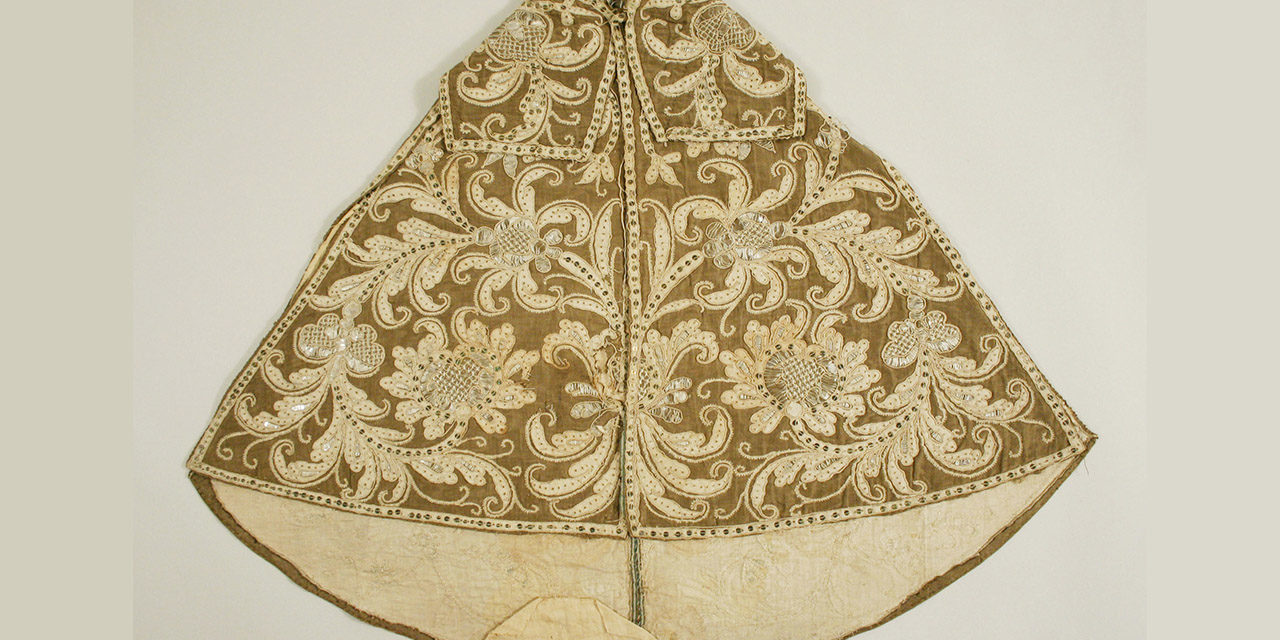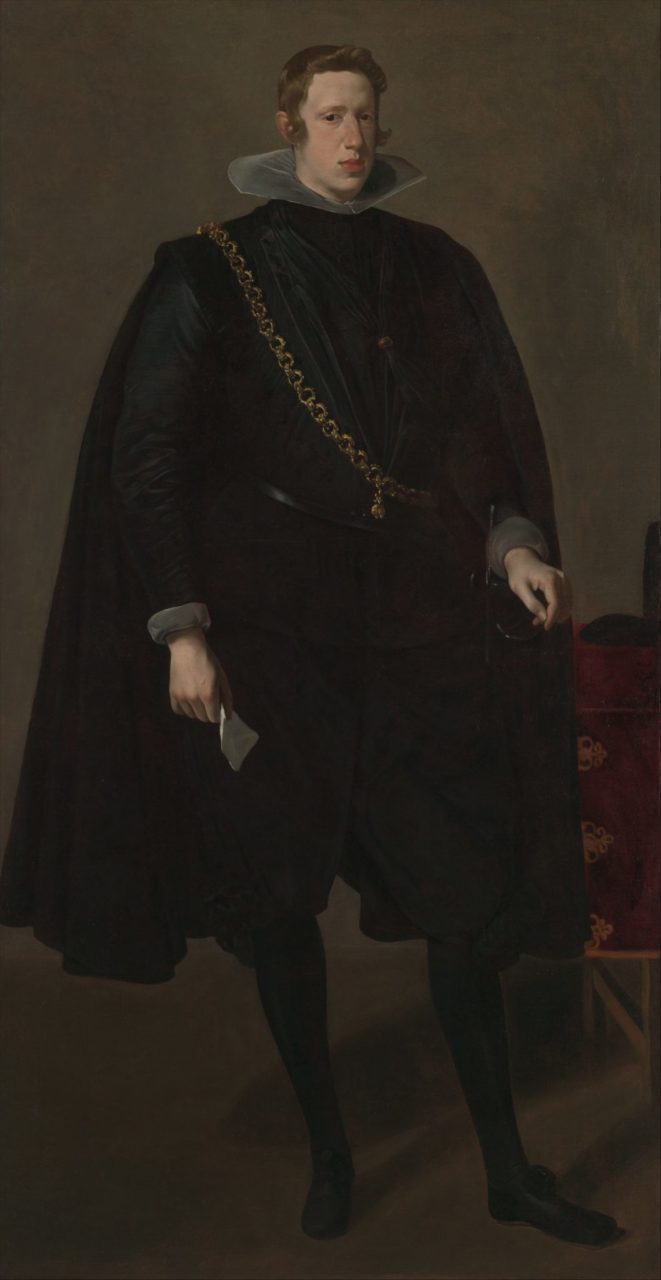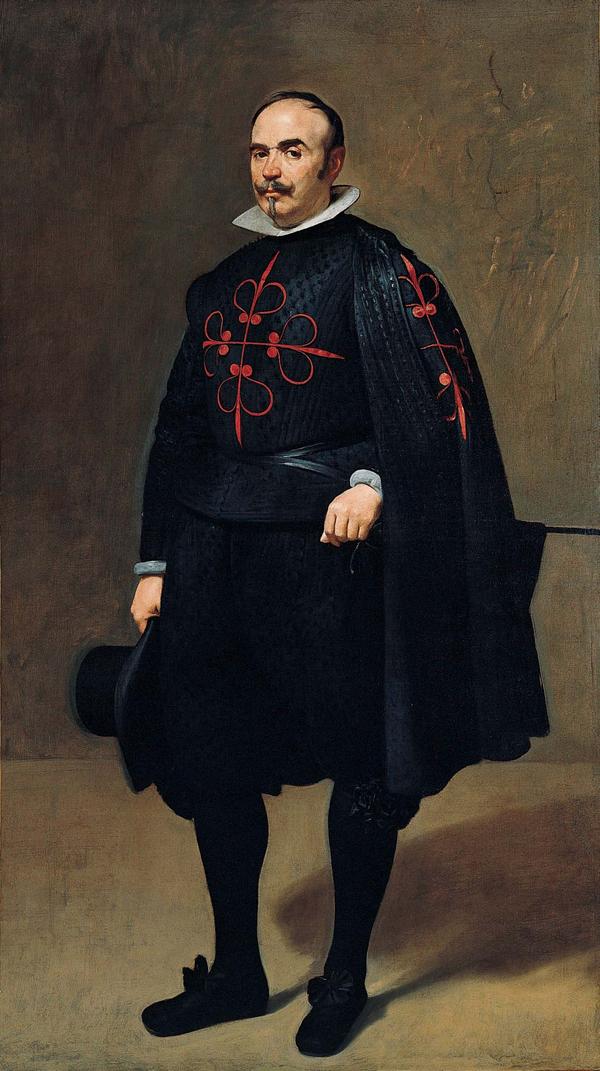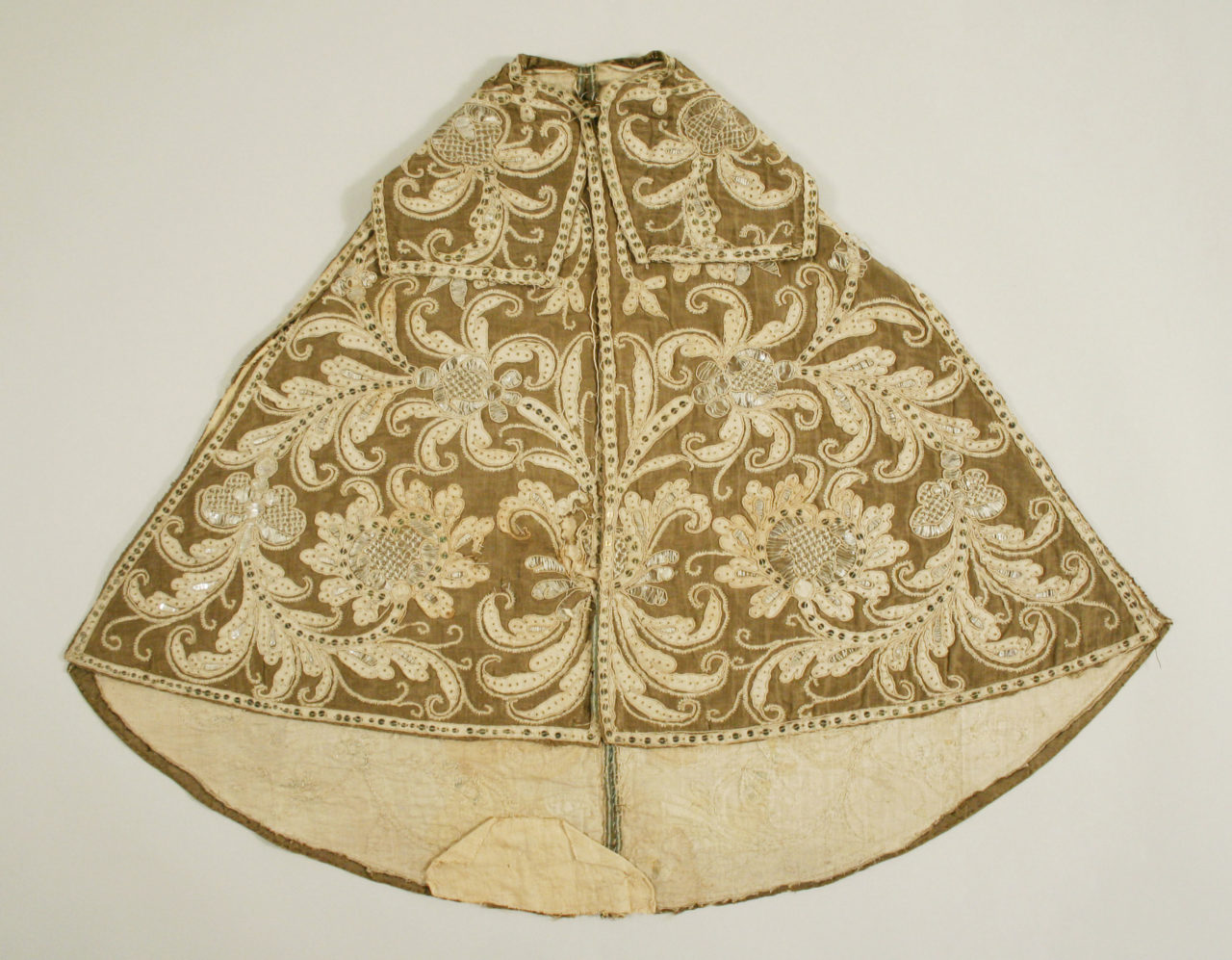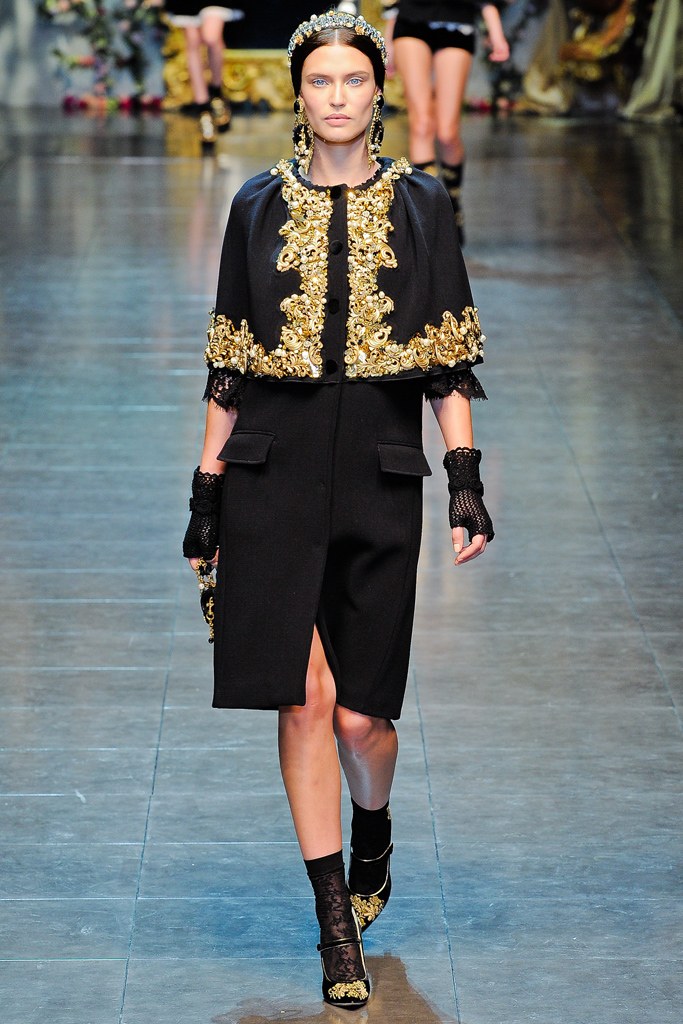Originating from Spain, an outer wrap often cut in a three-quarter circle.
The Details
Daniel Delis Hill defines the Spanish cape in his History of World Costume and Fashion (2011), writing: “It was basically a short, hooded cape cut as a three-quarter-circle and usually cropped to about the hips” (358).
The Metropolitan Museum of Art has a great example of a 16th-century Spanish cape in its collection (Fig. 1). Of figure 1, Jane Farrell-Beck of The History of Costume: From Ancient Mesopotamia through the Twentieth Century (1992) writes:
“Capes were the most popular outer wraps for wealthy men during the late 1500s; three quarter-circle Spanish capes had special appeal. They were made of brocaded silk or were enriched with embroidery or fur lining.” (310)
Plainer black capes also became fashionable in the 17th century as seen in Velázquez’s portrait of Philip IV (Fig. 2). In figure 3 the sitter Don Pedro, who was a member of Philip IV’s privy council, wears a Spanish cape with matching doublet, as the Kimbell Art Museum explains:
“He [Don Pedro] was named honorary postmaster of the realm and, by royal decree, governor of his native town of Briones. Prominently displayed on his doublet and cape is the red cross of the Order of Calatrava, founded in the Middle Ages as a defense against the Moors and subsequently a privilege of the aristocracy.”
Silvia Ventosa and Lucy Lawton stress the importance of the cape to Spanish identity in the Berg Encyclopedia of World Dress and Fashion:
“The cape, which wrapped men from the neck to the feet, was common in all Spanish villages. It defined the Spanish men’s silhouette and was so important to a feeling of identity that, in 1766, a rule in Madrid that outlawed the use of long capes that could hide weapons provoked a popular uprising known as the Esquilache Riots.”
While first appearing during the Renaissance, the appeal of the Spanish cape was enduring and far reaching even beyond Spanish culture. Edward I. Bleiberg and James Allan Evans writing about “Fashion Trends in the Early Seventeenth Century” for Arts and Humanities Through the Eras (2005) suggest that not only did these capes come in a variety of shapes, but they were also made elaborately and favored for years to come:
“the fashion for these loose-fitting outer garments had spread throughout Europe in the second half of the sixteenth century, and had showed considerable variety in length and cut. In Spain, capes had usually been constructed out of heavy and dignified cloth, but elsewhere in Europe, they, like other elements of Spanish dress, became elaborately decorated. The cloak had a perennial appeal as well.”
Figure 4 is an elaborately embroidered 17th-century cape in the shorter length that became fashionable.
Fig. 1 - Designer unknown (Spanish). Cape, 1560–80. Silk, metal thread. 36.46.2. Purchase, Joseph Pulitzer Bequest, 1936. Source: The Metropolitan Museum of Art
Fig. 2 - Velázquez (Diego Rodríguez de Silva y Velázquez) (Spanish, 1599–1660). Philip IV (1605–1665), King of Spain, 1624. Oil on canvas; 200 x 102.9 cm (78 3/4 x 40 1/2 in). New York: The Metropolitan Museum of Art, 14.40.639. Bequest of Benjamin Altman, 1913. Source: The Metropolitan Museum of Art
Fig. 3 - Diego Velázquez (Spanish, 1599 - 1660). Portrait of Don Pedro de Barberana, 1631-1633. Oil on canvas; 198.1 x 111.4 cm (78 x 43 7/8 in). Fort Worth: Kimbell Art Museum, 1981.14. Source: Kimbell Art Museum
Fig. 4 - Designer unknown (Spanish). Cape, 17th century. Silk, linen. New York: The Metropolitan Museum of Art, C.I.41.151.2. Gift of Miss Irene Lewisohn, 1941. Source: The Metropolitan Museum
Its Afterlife
A look from the Dolce & Gabbana 2012 Fall-Winter collection (Fig. 5) offers a modern take on the Spanish cape. Shown layered and in black it follows very closely the Spanish ideal as seen in portraits by Velázquez, coupled with the elaborate decoration found in surviving capes.
Fig. 5 - Dolce & Gabbana (Italian, 1958 - Present, 1962 - Present). Dolce & Gabbana. Fall/Winter 2012 Ready to Wear, 2012. Source: Vogue
References:
- Bleiberg, Edward I., ed. “Fashion Trends in the Early Seventeenth Century.” Arts and Humanities Through the Eras. Vol. 5: The Age of the Baroque and Enlightenment 1600-1800. Detroit: Gale, 2005. 116-117. Gale Virtual Reference Library. Web. 17 Feb. 2016. http://go.galegroup.com/ps/i.do?id=GALE%7CCX3427400835&v=2.1&u=fitsuny&it=r&p=GVRL&sw=w&asid=070bd3507540ef609a2e5c05b780b3ad
- Hill, Daniel Delis. History of World Costume and Fashion. Upper Saddle River, NJ: Pearson Prentice Hall, 2011. http://www.worldcat.org/oclc/731445106.
- Lawton, Lucy and Ventosa, Silvia. “Spain.” Berg Encyclopedia of World Dress and Fashion, Volume 8 – West Europe. Accessed February 17, 2016. http://libproxy.fitsuny.edu:2212/10.2752/BEWDF/EDch8045
- Payne, Blanche, Geitel Winakor, and Jane Farrell-Beck. The History of Costume: From Ancient Mesopotamia through the Twentieth Century. 2nd ed. New York: HarperCollins, 1992. http://www.worldcat.org/oclc/659908345.
- Tortora, Phyllis G., and Sara B. Marcketti. Survey of Historic Costume. 6th edition. New York: Fairchild Books, 2015. http://www.worldcat.org/oclc/921525937.

